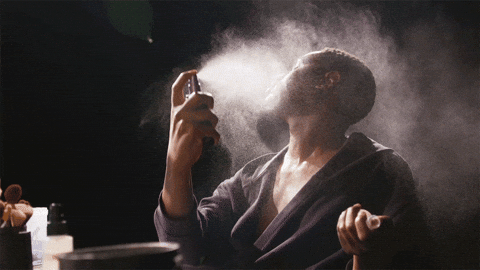Tips & Suggestions to Keep Your Cool
Summer is here in Texas. And we’ve been blessed (or cursed) with abnormally “cool” summer temps, especially in the San Antonio area. Texans know that the weather can change for the worse in a very short amount of time. The old saying, “Don’t like the Texas weather? Wait 5 minutes” is definitely on the true side this season!
Add to that the plentiful rain we’ve had plus all the humidity that comes with it, and the heat index isn’t much different than when it’s dry and hot. The humid conditions, however, make for ample amounts of heat and/or sweat and the body can quickly reach dangerous temperatures which can cause illness, permanent damage or death.
People working in non-climate controlled conditions need to be aware of the body’s signals when the heat is getting the better of them. Specifically, noticing the signs of dehydration, exhaustion, and heat stroke in themselves and their colleagues. All three of these serious conditions are completely preventable by following simple guidelines and a few life hacks.
What is a Heat-Related Illness?
There are three stages of heat-related illnesses:
- Dehydration
- Heat exhaustion
- Heat stroke
All three stages are different degrees of the same cause; the body isn’t able to cool itself off.
Dehydration is the first and mildest stage. Symptoms include thirst, dizziness, excessive perspiration and cramping especially in the abdomen or legs.
Heat Exhaustion is more serious. Symptoms include fainting, nausea, vomiting, cool, pale, clammy skin, and a rapid but weak pulse. It’s important to note that the victim may have a normal body temperature even if they’re in the exhaustion stage.
Heat stroke is the most serious and can quickly turn deadly. Victims of heat stroke may have an altered mental state including confusion, a throbbing headache, rapid but strong pulse, hot and dry skin, and a body temperature of 105 or higher. It’s important to get emergency medical attention as quickly as possible if a heat stroke is suspected!
Keeping your Cool
We cannot say it enough… Preparation is the key to preventing illness or death from working in hot conditions. Working a physical labor job is hard on the body even when it’s comfortable outside! No matter how fit a worker is, once the temperature is more than 75 degrees, modifications to your day will need to be planned out. Let’s discuss the most common-sense strategies for staying healthy in the heat of the workday.
Water, anyone? Anyone? Buehler?

When it’s hot on the job, you may not feel thirsty at all. According to this CDC article, even in moderate conditions, workers need to stay hydrated. Plain water is best because eating anything salty during daily meals or snacks supplies most people’s electrolyte needs, so Gatorade and Powerade drinks (especially the full-sugar ones) really aren’t necessary.
A gross but neat fact: Your body will tell you when you’re dehydrated. The lighter colored your urine is, the more hydrated you are. If the urine is dark, chances are you’re dehydrated to some degree.
Ease up on the Caffeine and Alcohol

Most people know that caffeine is a diuretic, which means it pulls fluids out of your body. While we love the coffee or tea buzz first thing in the morning, take it easy. And if your morning buzz is energy drinks, be extra careful because they’re loaded with sugar, synthetic vitamins and caffeine. Taking a naturally sourced vitamin B complex supplement delivers a steady stream of energy for hours with no crash.

Likewise, those rounds during happy hour after the workday is done can also kick-start dehydration for the next day. And hangovers are bad enough when you don’t have to work the next morning! At the very least, double fist your drinks with a glass or bottle of water in one hand for a 1:1 ratio.
Dressing the Part

Light, loose-fitting natural fibers like cotton and linen are perfect for hot weather. They are light on the body as well as excellent at wicking the sweat from the body to dissipate the body’s core temperature. Some of the worst materials you can wear to keep cool are polyester and rayon; they are terrible for trapping heat and not wicking sweat. Pay attention to labels on clothing as well, as the textile industry has perfected the art of making some synthetic fibers feel like natural threads; and you don’t want to find out the hard way when you’re at the job site.
Acclimatize!

It can take the human body up to 14 days to get used to a significant change in temperature, so it’s important to ease oneself into 100% effort on the job. Pace yourself and work up to maximum productivity over several days. Be sure to use your work breaks to get out of the heat and check-in with your limits.
Spritz, fan, splash, repeat!

Keeping a small spray bottle handy with cool water and maybe a drop or two of eucalyptus and/or peppermint oil can make all the difference between a tolerable shift or not. Spritzing yourself during breaks will significantly help improve the comfort level. Also, splashing cold water on your face/neck every hour works wonders.
Having a breeze helps to dissipate the body’s core temperature with the help of sweating. Most hot indoor work environments have a fan of some sort moving air in the workspace. If not, don’t hesitate to request one. HVLS fans, such as Big Ass Fans are now commonplace in manufacturing and warehouse environments.
Working in the heat certainly has its challenges and risks, but taking the time to plan your workday with a few acts of preparation can make it not only tolerable, but comfortable. Right now, FirstOption has a wide variety of jobs both in warm work environments as well as climate-controlled manufacturing facilities. If you’re interested in learning more about our open job opportunities, please click here to take a look at our open jobs list.


